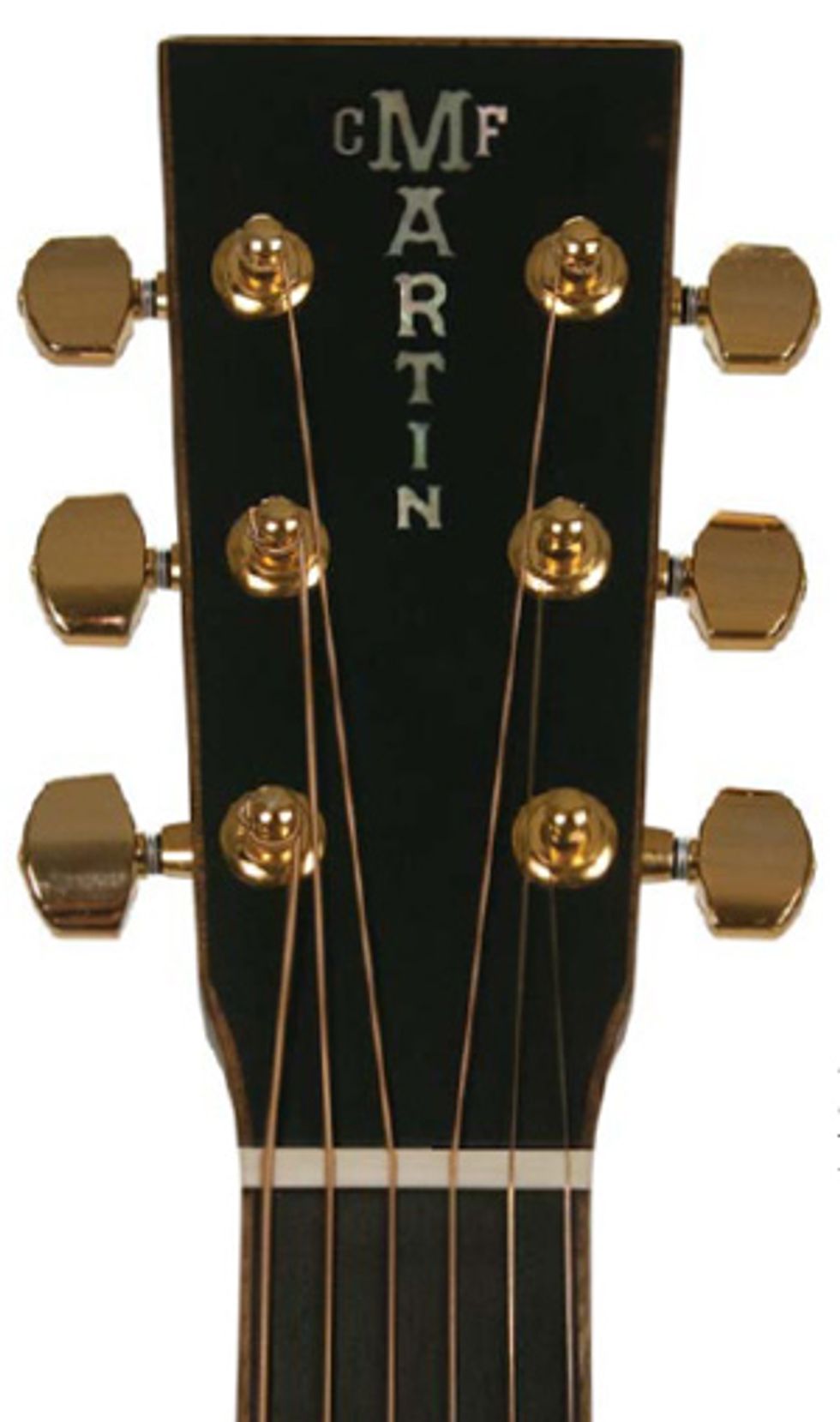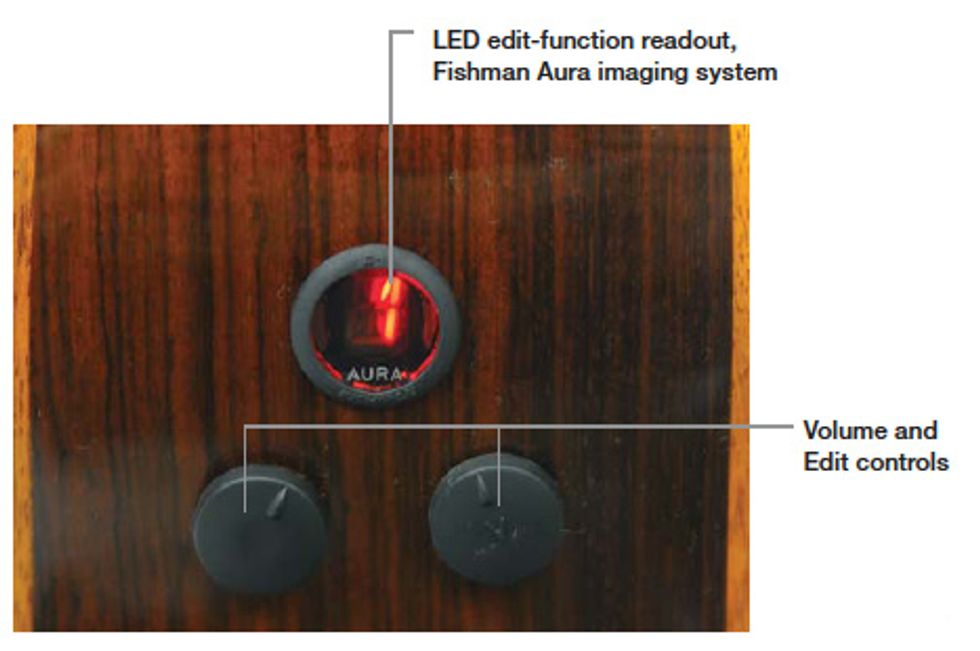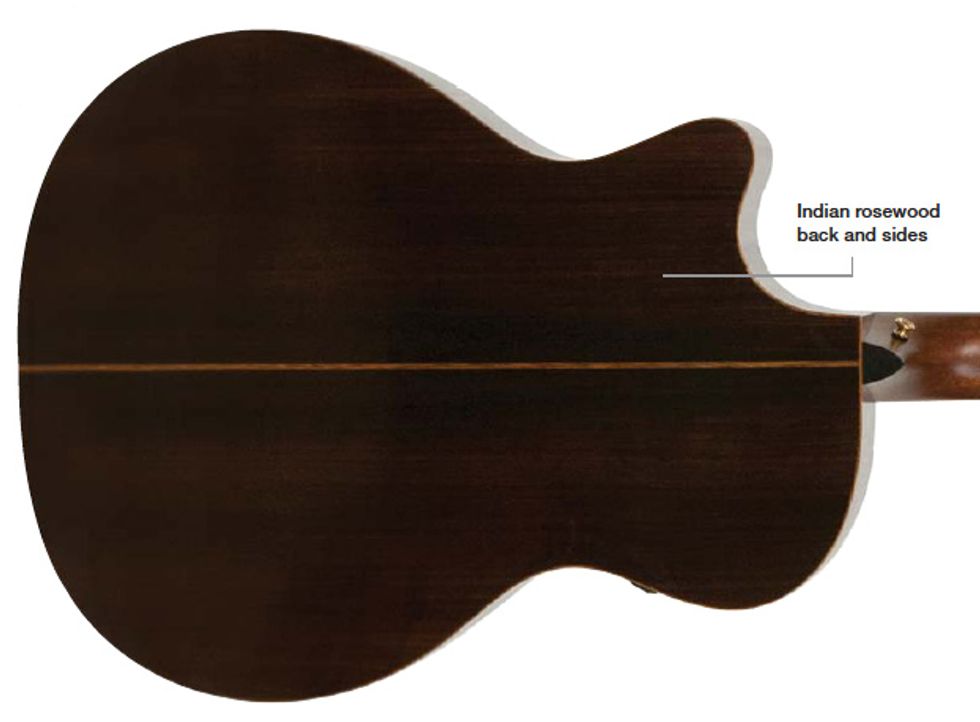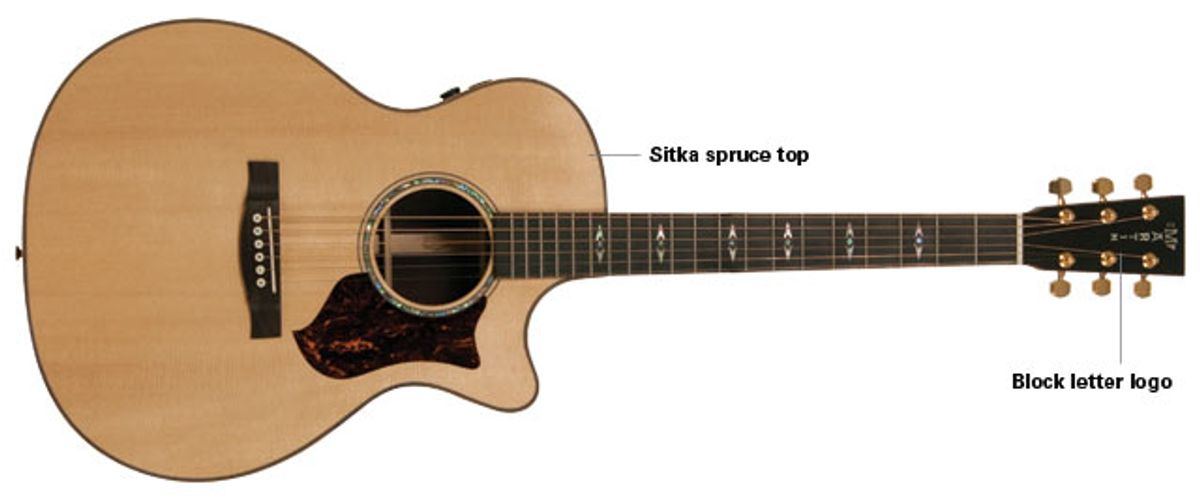A Grand Performance from Martin''s Performing Artist series with live performance friendly features such as the Fishman Aura F1 system
If Martin never introduced another new guitar, their place as a gold standard in studios and on stages everywhere would remain forever assured. But for all their heritage and iconic guitars that are already practically perfect, Martin hasn’t stopped innovating or building new guitars for new niches and evolving players.
The Performing Artist series is one of the most recent manifestations of that commitment. In this case, Martin is reaching out to the sizable chunk of the contemporary acoustic market that’s plugging in and turning up—not just for performance, but also for recording at home and in the studio. The GPCPA1 Grand Performance reviewed here addresses those needs by including a Fishman Aura imaging system, as well as enhanced-playability features like a slim-taper neck. But for all its concessions to the needs of new-world singer-songwriters and pickers, the GPCPA1 is a Martin through and through and a joy to play in any situation.
A Feast for the Eyes, Nose, and Ears
 The first thing you notice about the
Martin GPCPA1 is that it smells as good
as ambrosia on a warm summer night. It’s
beautiful to look at too, with a curvaceous
Grand Performance body built
around East Indian rosewood back
and sides, and a solid Sitka top. The
“select hardwood” neck (in Martin’s
nomenclature) looks like mahogany
or sapele and is shaped in the
Performing Artist profile, which
tapers gradually down its whole
length. The nut, saddle, and endpins
are Tusq, which always provides a certain
oomph that’s a lot like you’d expect
from bone.
The first thing you notice about the
Martin GPCPA1 is that it smells as good
as ambrosia on a warm summer night. It’s
beautiful to look at too, with a curvaceous
Grand Performance body built
around East Indian rosewood back
and sides, and a solid Sitka top. The
“select hardwood” neck (in Martin’s
nomenclature) looks like mahogany
or sapele and is shaped in the
Performing Artist profile, which
tapers gradually down its whole
length. The nut, saddle, and endpins
are Tusq, which always provides a certain
oomph that’s a lot like you’d expect
from bone.Ornamentation is subtle and lovely, with simple arrow-and-square fretboard inlays, a striking pearl rosette surrounded by a black-accented double ring, and triple black purfling around the top. The pickguard deviates from the trademark Martin template and evokes a vague country-western look. My favorite feature, though, might be the ebony headplate with the old-fashioned C.F. Martin block letter logo in pearl descending the center. I’ve always preferred that bold, blocky look to the more common script logo, and it looks great with the gold Martin tuners. The satin-finished, 25.4"-scale neck has a fingerstyle-friendly 1 3/4" nut. The fretboard is bound in golden-tinged ovangkol that matches the body binding, and a peek inside the soundhole reveals a hybrid scalloped X-brace.
The Fishman F1 Aura system interface is placed familiarly enough on the upper bout. But rather than a clunky plastic frame-and-plate section for the controls, there are just two low-profile knobs and an LED indicator to tell you what options you have selected. The knob closest to the top controls Volume, and the knob closest to the player is used to select Aura settings. There are nine Aura images available that you can modify using a tap and a twist of the edit knob to adjust Treble, Mid, Bass, and Compression settings. The F1 Aura also has a tuner (unlike some onboard tuners, this works with any tuning) and a really slick 3-band anti-feedback system. Conveniently stashed at the endblock, the 9-volt battery that powers the FI Aura is easy to access and—according to the manual—will last up to 54 hours with a lithium battery and up to 27 hours with a standard alkaline cell.

Sweet Acoustic or Electrified Tones
The GPCPA1 has a truly intoxicating tone. The spruce and Indian rosewood pairing produces a beautiful combination of warmth and clarity, bursting with overtones that will keep your ears ecstatic for hours. Lower tunings like C–G–D–G–B–D and DADGAD, showcased the Martin’s impressive capacity for big bass sounds without overdriving the box or sounding tubby. In standard tuning the guitar has a sweet fingerstyle tone, but when you dig in with a flatpick, it can really bark with great definition.
A lot of folks don’t completely understand the principle behind the Fishman Aura systems. First of wall, it is not a modeling system. It does not make a bad guitar sound like a great guitar, nor will it make your Martin sound like a Telecaster or a Les Paul. Fundamentally, the Aura system emulates the sound of your guitar played through a microphone instead of through a pickup system. And by using an algorithm that emulates a microphone’s interaction with the warm, breathy, woody, open presence of a real acoustic, you can get studio-level clarity that can be turned up really loud. The microphone emulations in the Martin’s F1 Aura system include some very cool specimens too: the DAP 4011, Schoeps CMC64g, Earthworks QTC 30, AKG C414-B, Neumann KM 84, Soundelux E47, GT Velo 8, Shure SM57, and a Neumann U 87.
I had the chance to gig with the GPCPA1 with my rhythm section, which happened to be in a pretty rowdy mood the night of the gig. These musicians play a lot of classic rock, R&B, funk, and blues, so they like to get loud. And the Martin had the goods to help me hang tight in the mix.
Following Martin’s directions (which you can explore via an included DVD), my first step was to set the volume as high as possible without overdriving my amp. Then I turned the Edit knob to blend between the undersaddle pickup and the Aura image (Martin recommends a 65 percent pickup balance). I chose the microphone image by pressing the Edit knob, and then turning the knob to move between images. There is a clear difference between each image, so spending a little time getting to know them before trying to pick one out for a given situation is key.
For the solo section of my show, I chose the Schoeps CMC64g condenser microphone image, which gave me a awesome mix of dark, rich, and brilliant overtones when I plugged into my very transparent L.R. Baggs Core 1 amp. But while the Schoeps tone was beautifully balanced, I decided to tweak it further by dialing the bass back a touch and kicking the presence up just a hair, which made the already warm image that much more enveloping.

To play in the heavier sonic environment of the trio, I chose the Neumann U 87 image because it seemed to compete less with the bass and emphasize the Martin’s beautiful midrange. I shaved the bass by just a tweak or two, pushed up the mids and treble, boosted the compression to 3, and dialed the blend to about 70 percent pickup. The guitar sounded great—real, rich, and present in the mix—and loud and clear and wonderfully free of feedback.
The 3-band anti-feedback control, which can automatically isolate up to three frequency bands that are inducing feedback, worked like a champ. I just pressed and held the Edit and Volume knobs for two seconds, waited for “1” to appear, and then watched a succession of numbers that indicated the system was reducing the offending frequencies. The other valuable onboard feedback-busting feature is the Phase setting, which you access by pressing the Volume knob once. You can use this to improve bass response at low volume and also to suppress feedback when you need to play loud.
The Verdict
The GPCPA1 is a gorgeous feather in Martin’s cap—a great sounding, great playing, stage-friendly super-axe that is as feature-rich as it is grounded in the Martin tradition. It only takes a little time to master the highly intuitive F1 Aura System that makes the guitar adaptable to just about any performance or studio situation. And unlike many acoustic/electrics that compromise on both fronts, the GPCPA1 excels in both realms.
Watch the video review:
Buy if...
you need a serious performance tool that offers outstanding tone,playability, and versatility in a roadworthy package.
Skip if...
a passive soundhole pickup is already more electronics than you can handle.
Rating...
Street $2999 (including hardshell case) - C.F. Martin & Co. - martinguitar.com |



